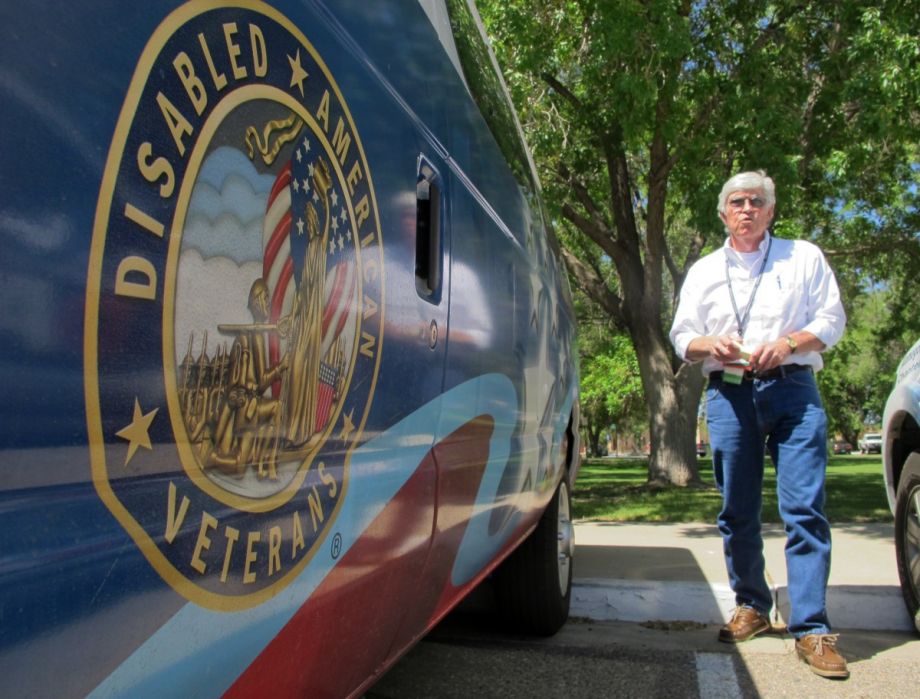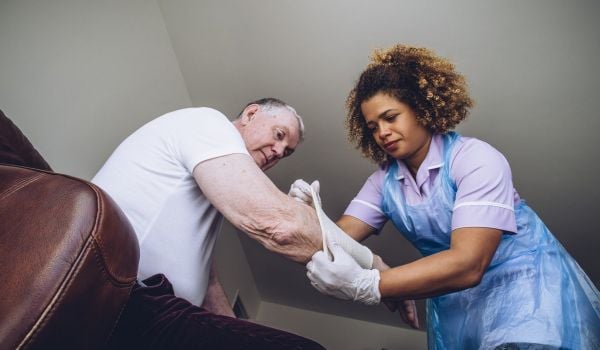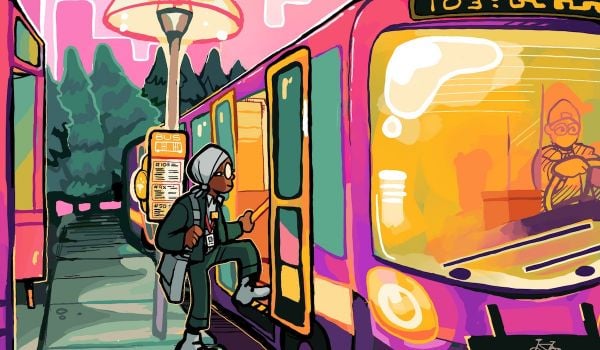U.S. veterans, like many who are elderly, low-income or have a disability, have access to specialized transportation systems, particularly for reaching Veterans Health Administration hospitals. The problem is, those systems are often highly localized, which can make inter-county travel difficult; also, beyond the medical centers, they don’t always go where veterans need to. It can be hard just to figure out which programs exist, and where other services, like public transit and demand-response services for disabled people, can pick up the slack.
A new tool designed to help veterans in Illinois connect with public and specialized transportation options is both attempting to address the current information gap and identifying where service gaps still exist. Lise Dirks, the principal investigator for the One-Click Transportation Resource Center, developed by a team of researchers at the Urban Transportation Center (UTC) at the University of Illinois at Chicago, says that the information gap persists especially in downstate, rural areas — outside of the Chicago region — where public transportation exists but is less robust.
“There’s also this issue of a perception that vets only need transit to the VA medical center, and that their transportation needs are similar to everyone else except for that one feature,” she says. “That really isn’t the case.”
Multiple programs exist to transport veterans to and from medical care, including the Veterans Transportation Service, which provides shuttles between VA medical centers and outpatient clinics, the Beneficiary Travel Program, which will reimburse veterans for medical trips, and a network of volunteers who will transport veterans from home to healthcare.
But these often operate only within a 50-mile radius of the medical centers, leaving veterans who, for whatever reason, cannot or will not drive, to cobble together public transportation to get to a pick-up area.
“There’s a first-leg, last-leg gap for anybody who wants to use public transportation,” says Dirks. “Veterans have to travel extremely long distances to access these medical centers, especially in Illinois. … The service level gaps occur primarily where veterans need to travel outside of their county or outside of the public transit service area.”
In an accompanying report, Dirks and her fellow researchers point out that while some of these gaps may be filled by demand-response services for disabled or elderly people, not all will. Compared to the general population, veterans are more likely to be disabled. Veterans of more recent wars, who are surviving more severe injuries, are particularly likely to have special needs. But there are also able-bodied veterans who can’t drive or are in one-car families, or need to access job training programs or other non-medical destinations, struggling to connect to transit in more rural areas.
Luckily for Illinois’ veterans, the state responded to a 2007 federal mandate that communities coordinate their transportation resources to better serve seniors, people with disabilities, and low-income individuals by creating a fairly robust rural transportation system. And the Federal Transit Administration has funded a Veterans Transportation and Community Livability Initiative, which promoted the creation of “One-Click/One-Call” centers where veterans and their families can learn what specialized transportation services are available to them. Dirks and her team were able to draw on the resources identified by the state of Illinois to create the One-Click system launching this week. It both aims to give veterans a better sense of their options, and points out where the state’s “human service transportation planning” has neglected the particular needs of vets.
As of now, the system is admittedly a little clunky. A veteran looking to find transportation options can only search for what’s available in their county or enter their origin and destination counties to try to plan a cross-county trip. There is no true trip planner option at the moment — a user can’t get point-to-point directions — but Dirks says with more funding and support she’d ultimately like to build one.
Where ample public transportation is available — like in Chicago — users are directed to the provider’s own trip planner website. The One-Click tool also lists services for disabled and elderly travelers. There’s a tab for commercial transportation options, a link to Google Trip Planner, and a list of some car-share services like ZipCar, where they’re available. Dirks admits it will need to evolve as transportation services do, which these days happens fast. In the next round of funding, she’d like to be able to provide information about where ride-sharing services like Uber and Lyft are operating, but right now that changes too quickly for her to keep up. (And whether those companies will step into the paratransit field themselves is still an open question.)
The website also features a feedback form, and Dirks encourages users to take advantage of it. Maybe Chi Hack Night wants to take it on?
Jen Kinney is a freelance writer and documentary photographer. Her work has also appeared in Philadelphia Magazine, High Country News online, and the Anchorage Press. She is currently a student of radio production at the Salt Institute of Documentary Studies. See her work at jakinney.com.
Follow Jen .(JavaScript must be enabled to view this email address)
















